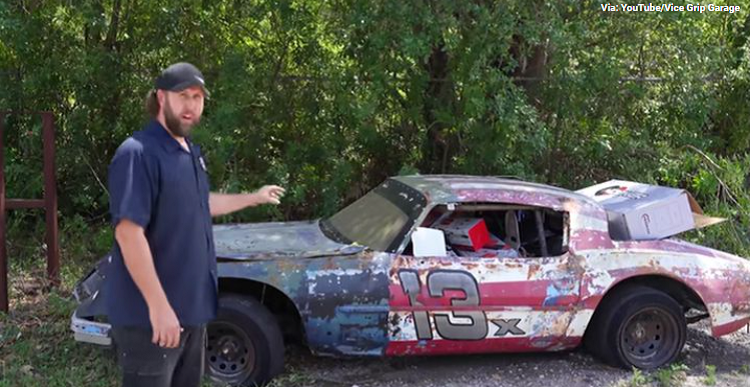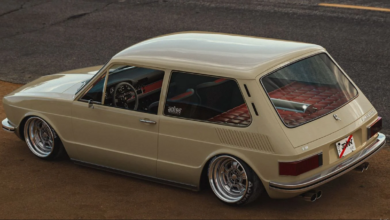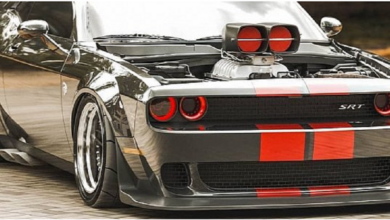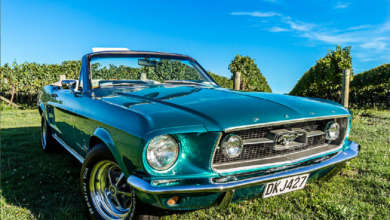Watch How This Iconic Chevy Camaro Drag Car Is Revived To Its Former Glory.
Classic car restorations are among the best entertainment programs for gearheads. It’s quite satisfying to see an old runner revisiting the modern roads, and – if it’s a sports car – competing with the more contemporary counterparts on the dragstrip. But unlike the typical restoration videos, the most popular restorations are the ones involving cars that have a known history. This could be anything ranging from the good-old Woodie wagon pickup trucks to the ever-so-popular high-powered muscle cars.
Most recently, we came across an abandoned Camaro ’74 race car with an incredible racing past. One knowledgeable auto-mechanic walked us through the rough-looking Camaro, before diving into its internal components, making a few parts replacements. It received its powertrain refurbishment, and a few other internal components that fired it off and gave it a chance on the racetrack once again.
This Chevrolet Camaro Is A Multiple Award-Winning Race Car
Now, we all know the Chevrolet Camaro as Chevy’s most powerful muscle car. And it’s clear that the vehicle has come a long way, especially when you look at what it is today. Well, this abandoned Camaro isn’t so different. At first glance, it appears to be in awful shape, with paint patches and visible rust spots across the body. Plus, its old tires, low stance, and overall condition point to the fact that this Camaro has been idle for a very long time. According to Derek, the car has been out of the game since the early 2000s – back to the times when the De Soto Speedway was in its momentous days.
While it has a rusted-out body, its appearance completely gives it away as a 1974 Chevrolet Camaro. This model year is part of the second-generation line that General Motors produced from 1970 through 1981. But this wasn’t just any Chevy Camaro. This unit has the United States flag painted across its body and the “13x” stickers on the door panels, which tells us that this was previously a race car. Speaking of which, the door panels were both welded shut. This is typical of most race cars. Welding the doors to the panels turns the car into a smoother one-piece vehicle, which makes the car more aerodynamic on the drag strip.
Actually, there’s an interesting story about the car. This Camaro was one of many cars that used to race in the early 2000s around the De Soto Super Speedway in Bradenton, Florida. The classic Camaro had its last hurrah around the 2000 to 2005 period and remained parked alongside other classics. After a long hiatus from the famous racetrack, Cleetus McFarland, a popular YouTuber, purchased the Speedway and restored it to its glory.
Derek took a closer look at the interior of the Chevrolet Camaro and noted that it has multiple rust areas, including the hood, quarter panels, and roof. Some parts, particularly the floor, showed signs of excessive corrosion, almost completely breaking apart.
Surprisingly, the Chassis faced lesser rust damage and most of the heavy-duty frame was still intact. Under the hood, the classic Camaro had a small block engine, which Derek recognized as a 5.7-liter L82 V8 engine, based on the casting number “3970014” behind the factory cylinder heads. Aside from the dirt and grime, the engine looked unharmed.
What It Took To Revive The Classic Camaro Race Car
As it turns out, James, the owner already had plans to refresh the classic race car. He went ahead and bought a few replacement parts for it. Among the parts he purchased was a distributor, performance valve covers, a fuel pump, some breathers, a high-performance intake manifold, and new Z-bar headers.
To check if the starters would respond and bring the engine to life, Derek added a 650 CCA battery, replacing the old and rusted-out battery. As a rule of thumb, the best battery CCA rating should be close to or greater than engine displacement in cubic inches, so this new battery was more than adequate to get the job done. For an engine that’s been inactive for years, it needed a little coaxing. He added some oil directly into the engine to lubricate the cylinders, pistons, and rings. After one more shot at the ignition, the engine fired up.
He then unbolted the headers, replaced the spark plugs, and added a new fuel system and composite gaskets. The project was then lifted into the garage, where it received new tires and tuning work. After that, the engine rendered a strong roar, signifying its re-birth. The Camaro ran a lap around the Freedom Factory to seal its resurgence once and for all.







That’s very good point